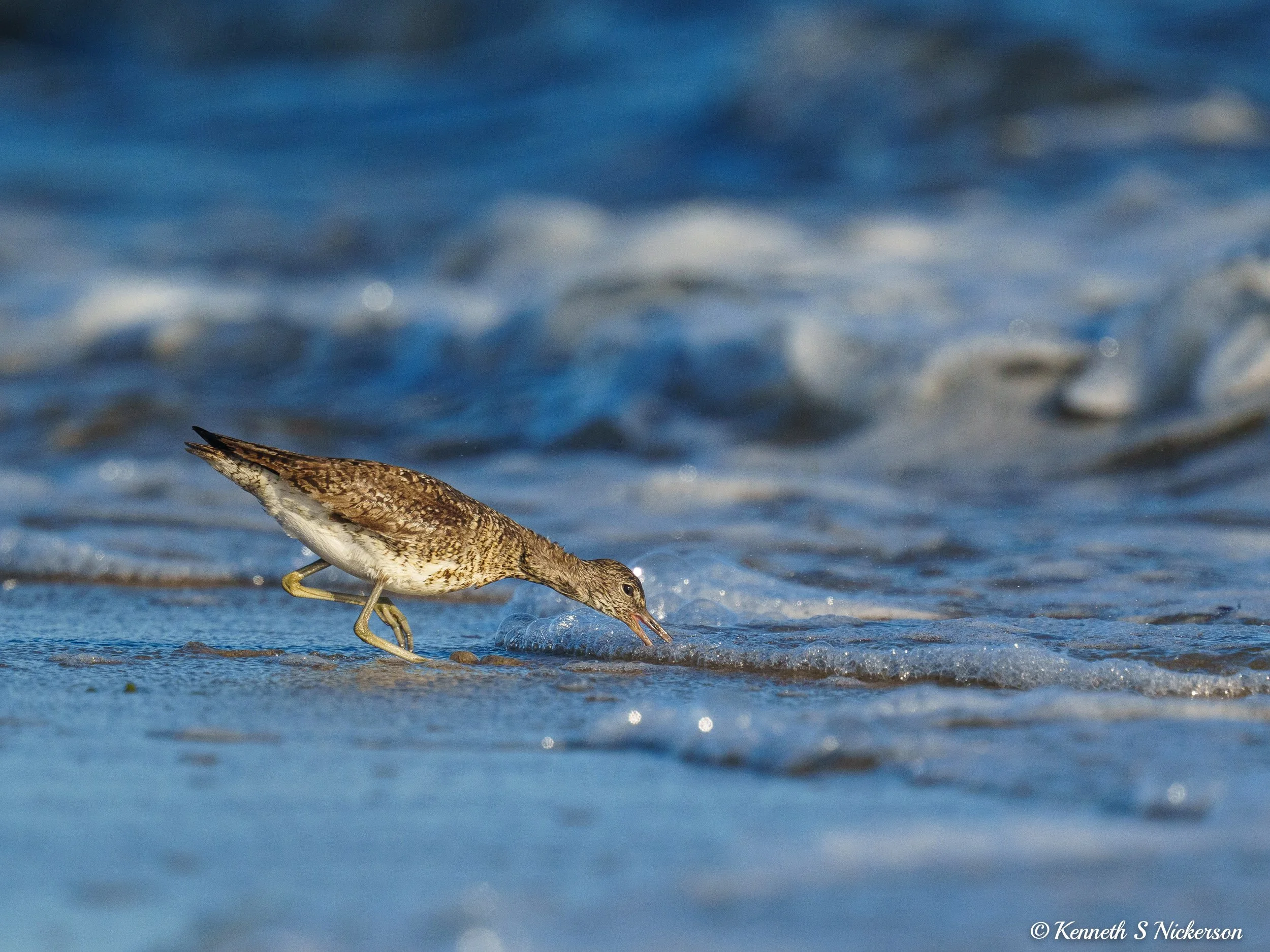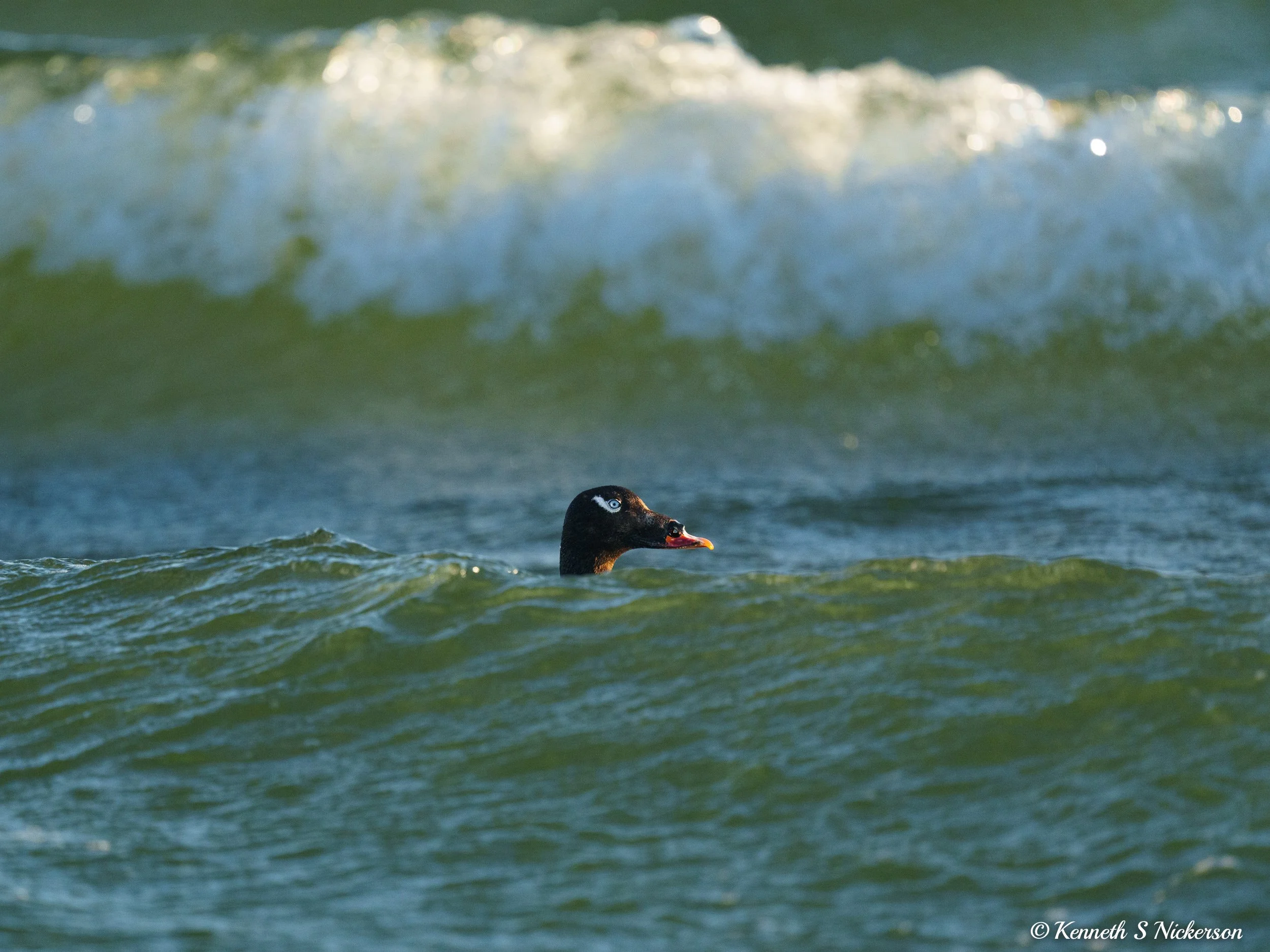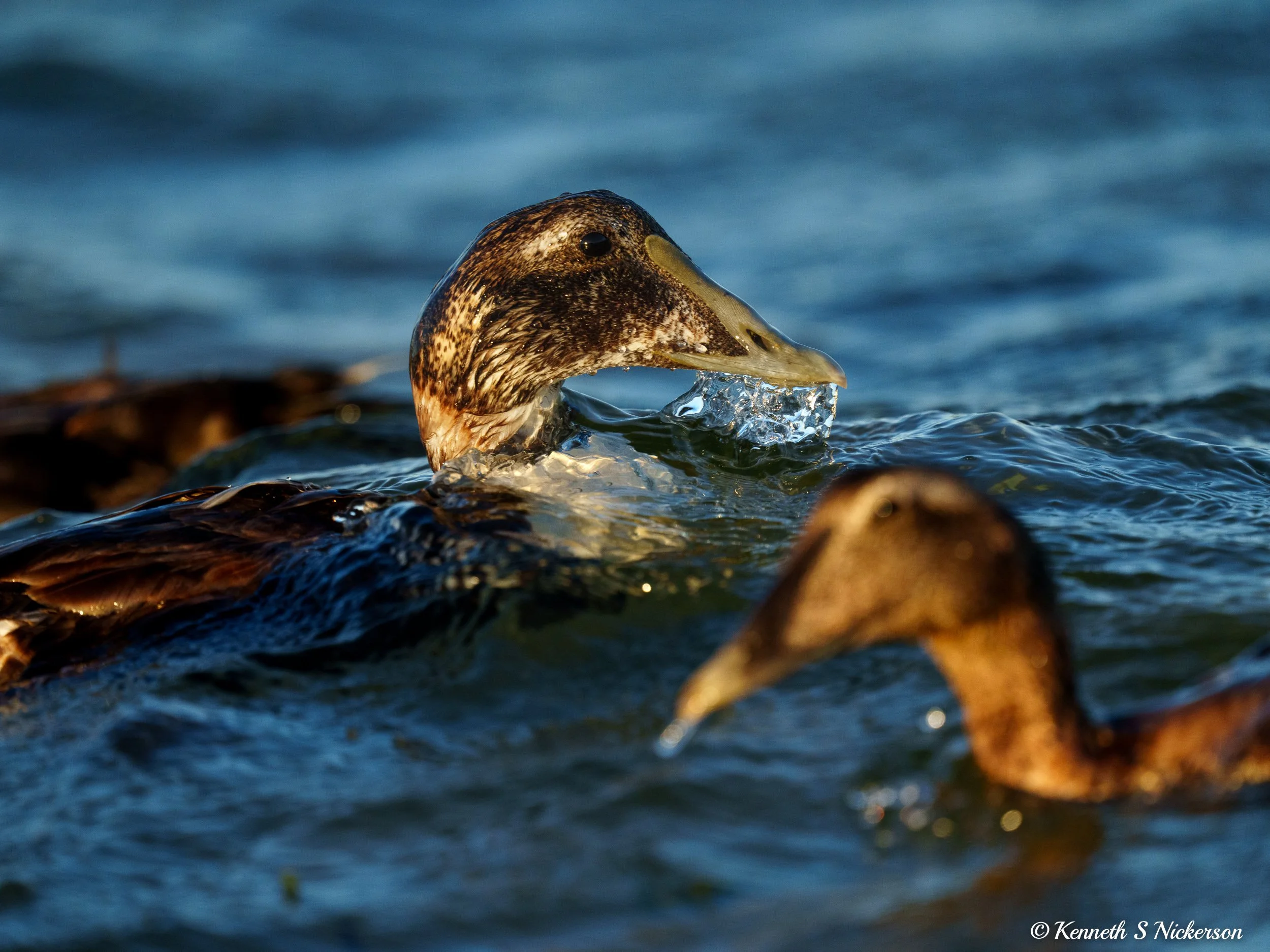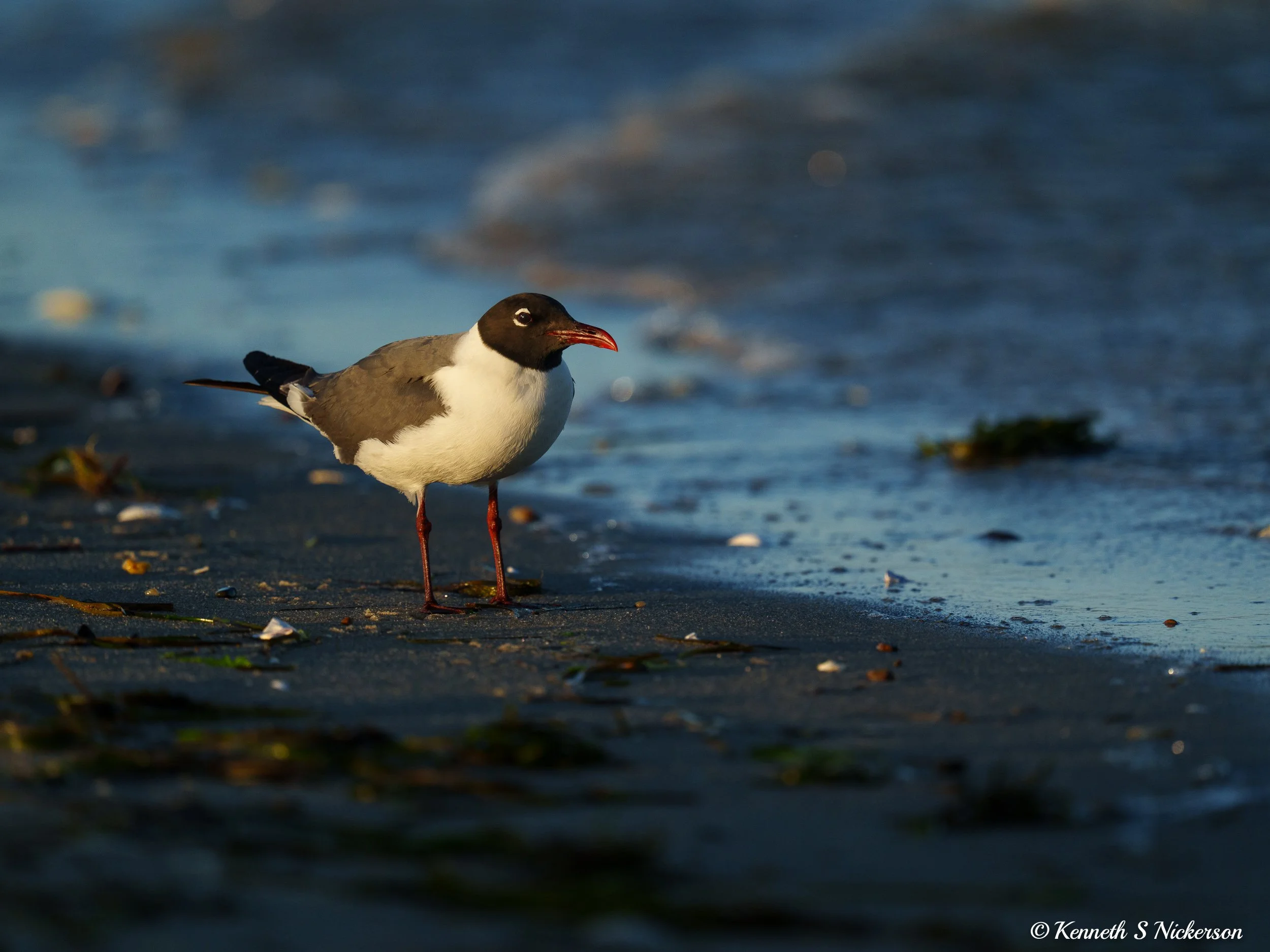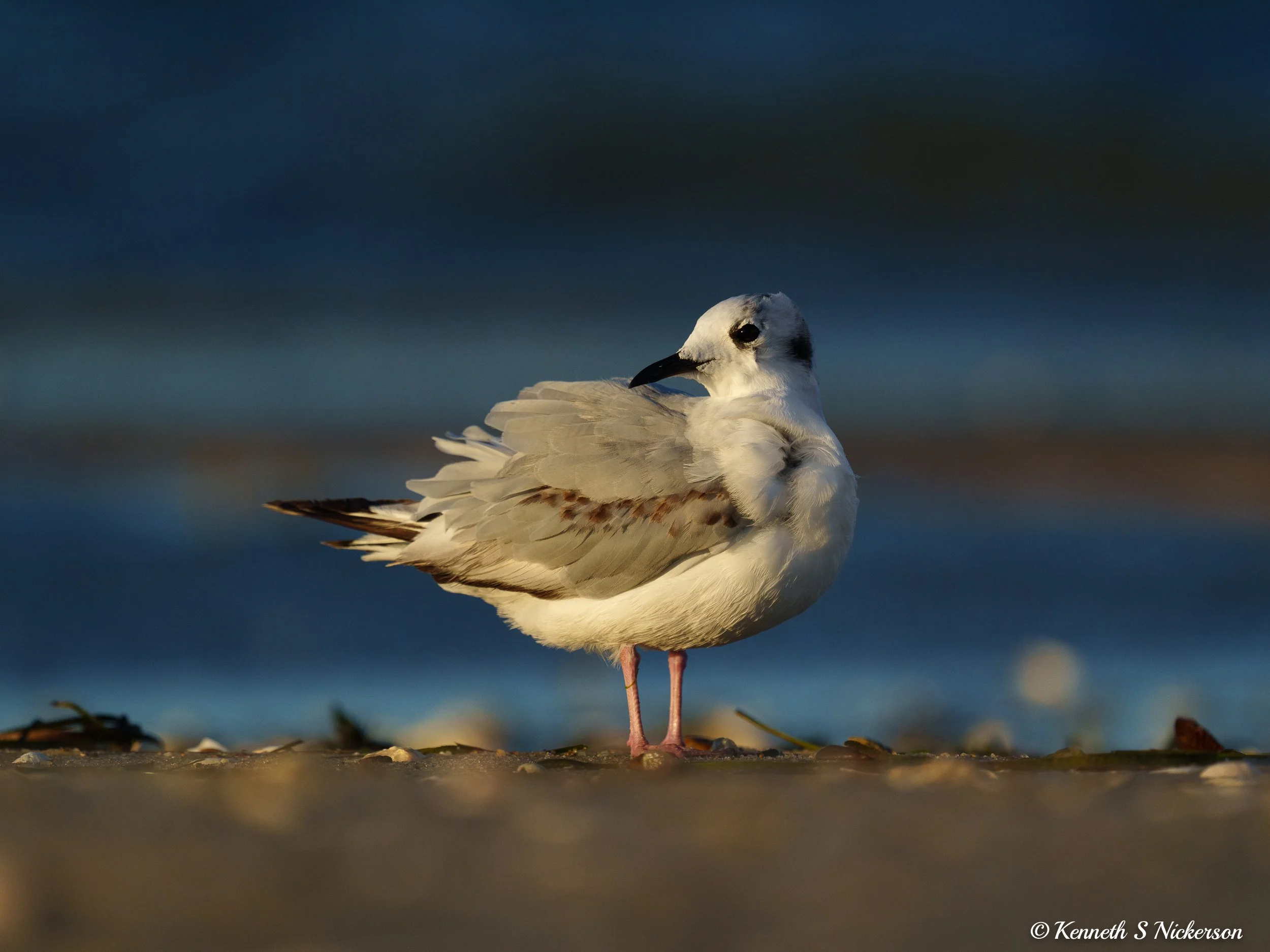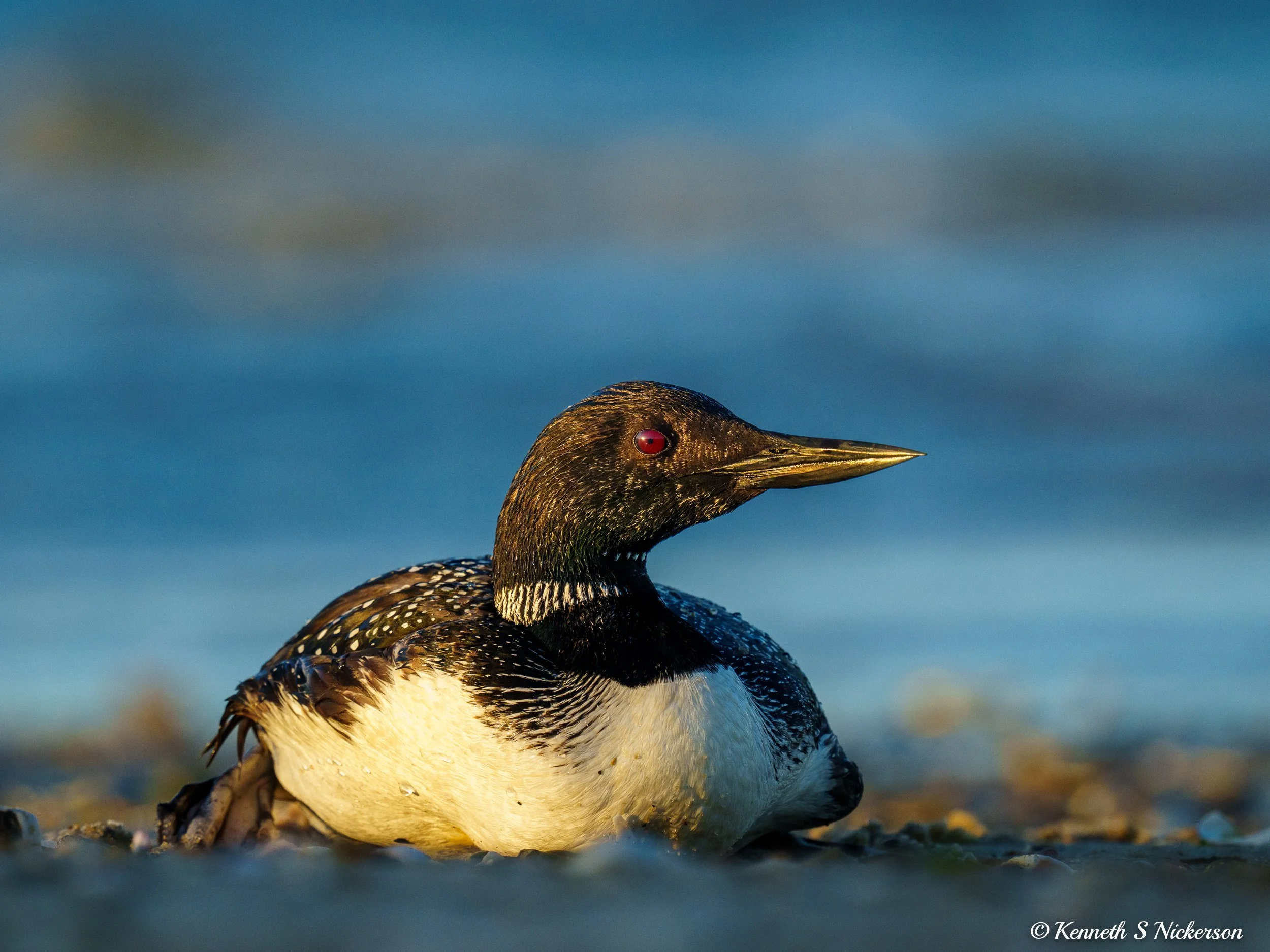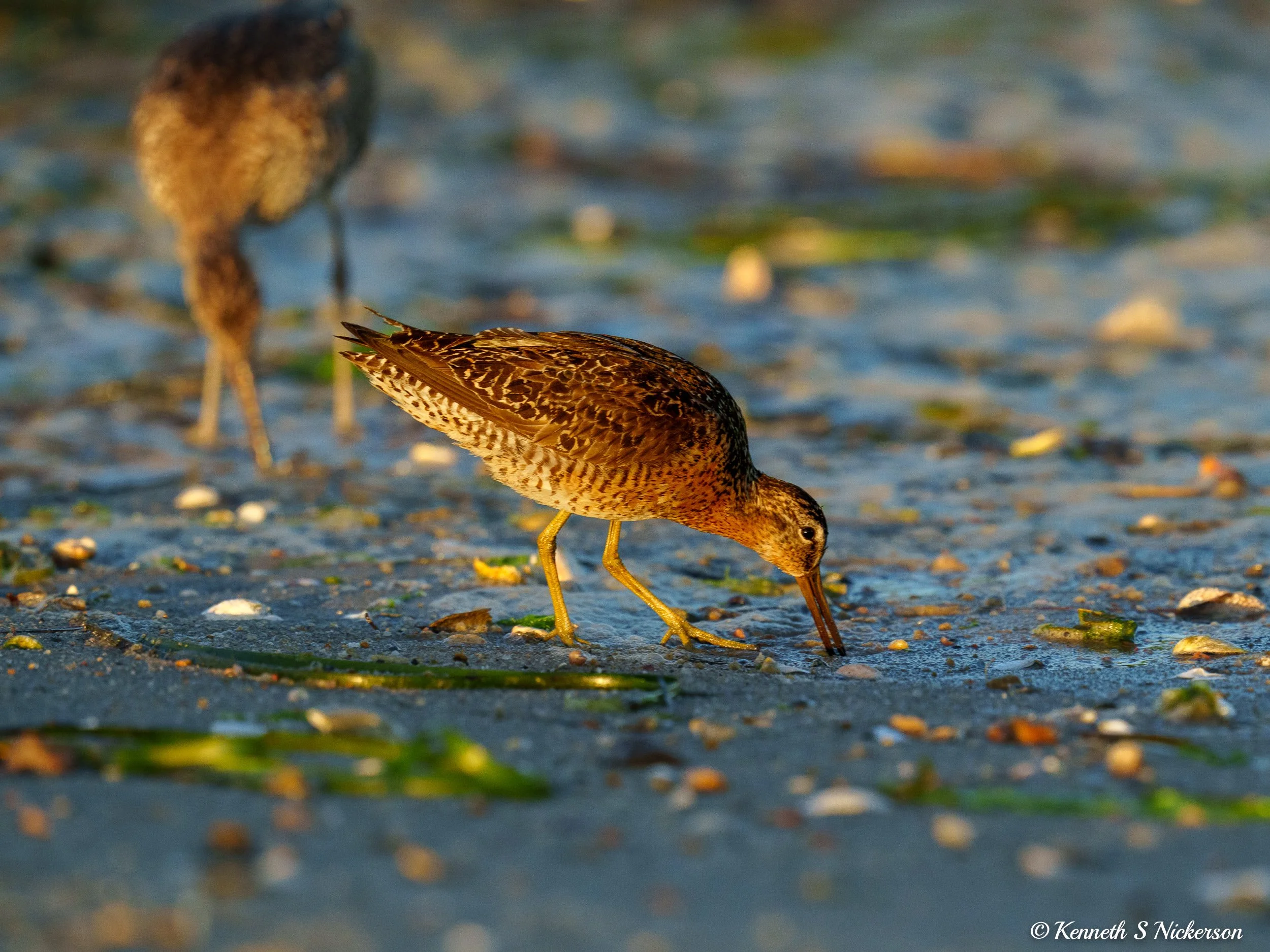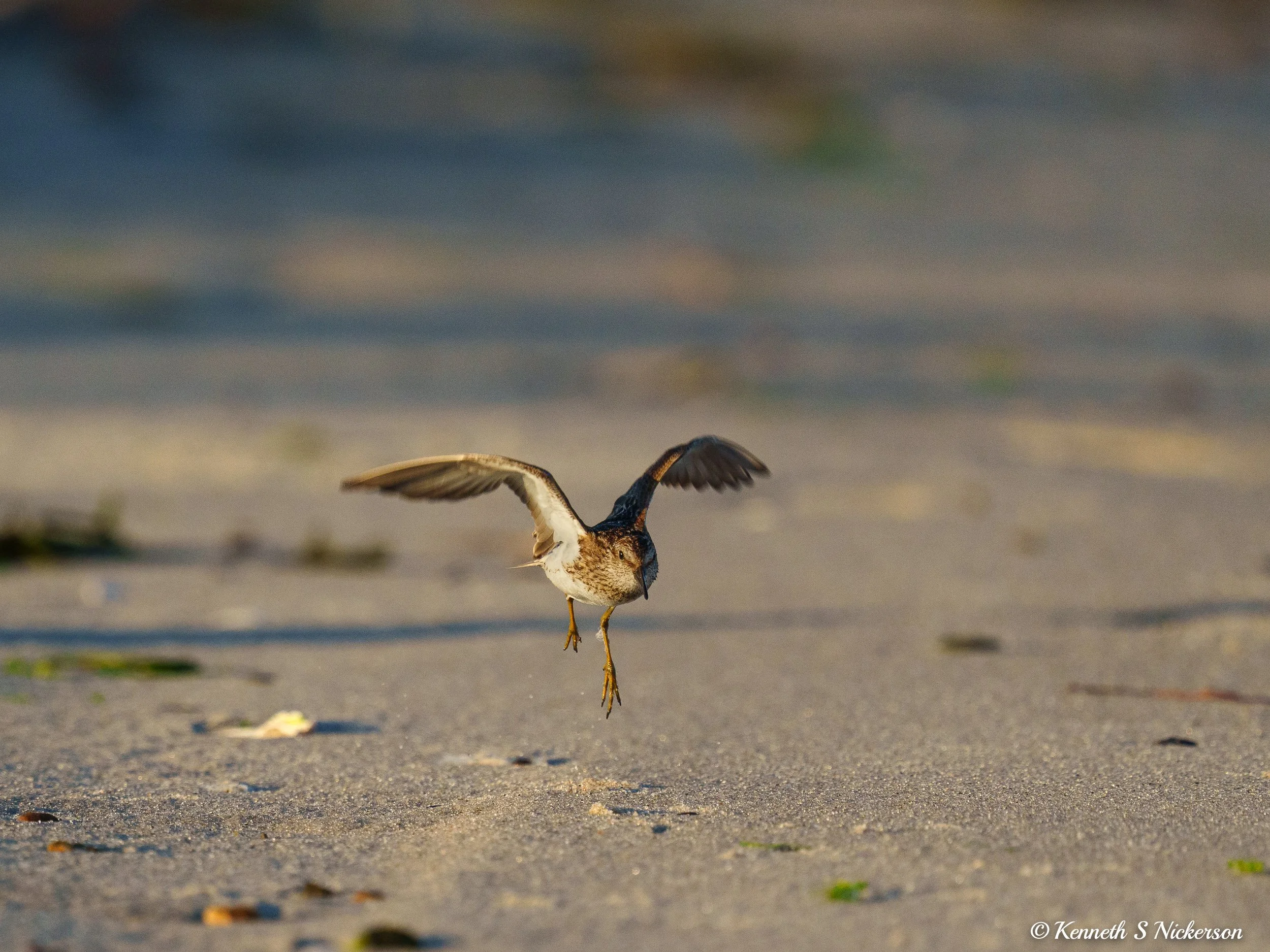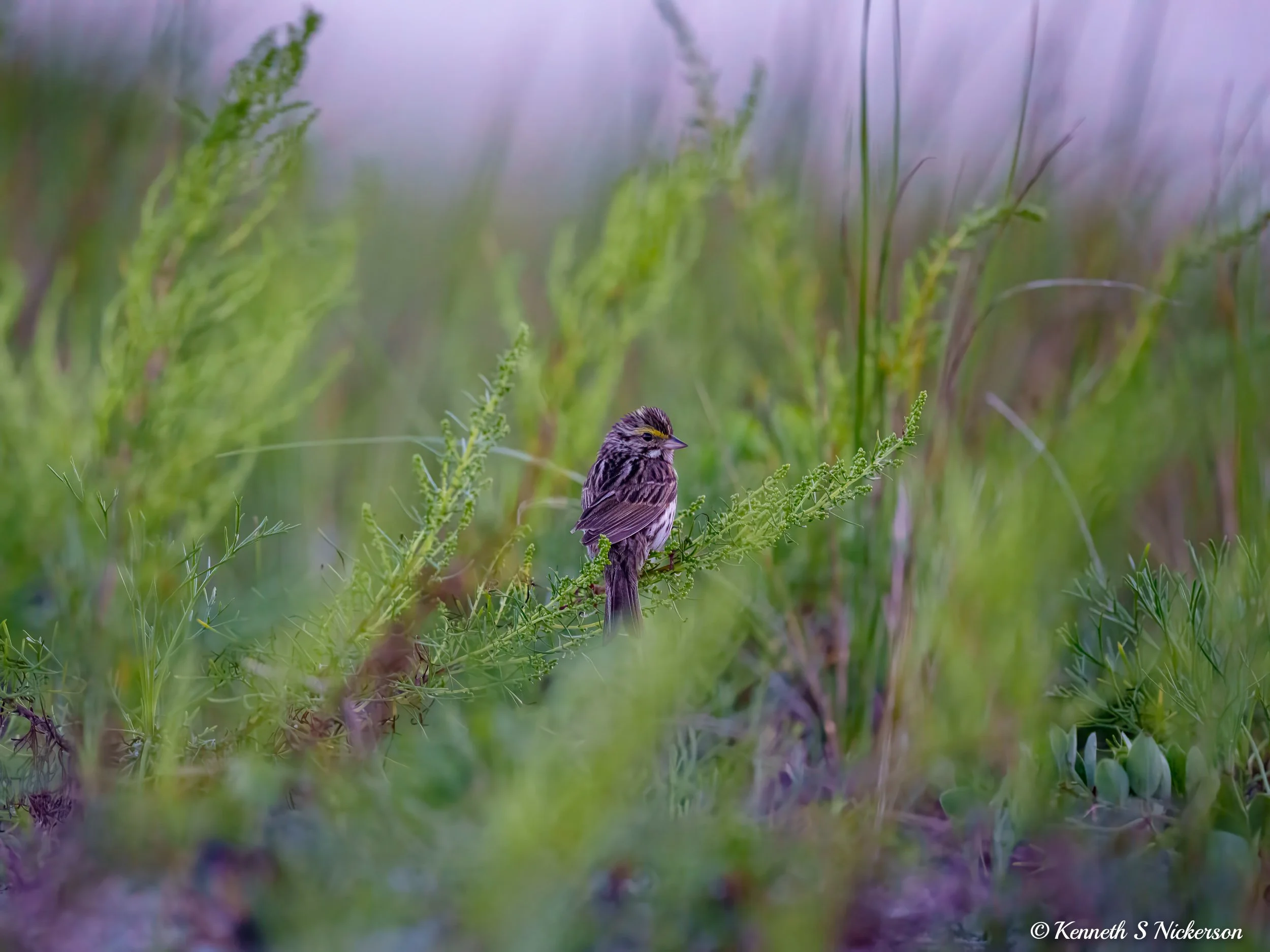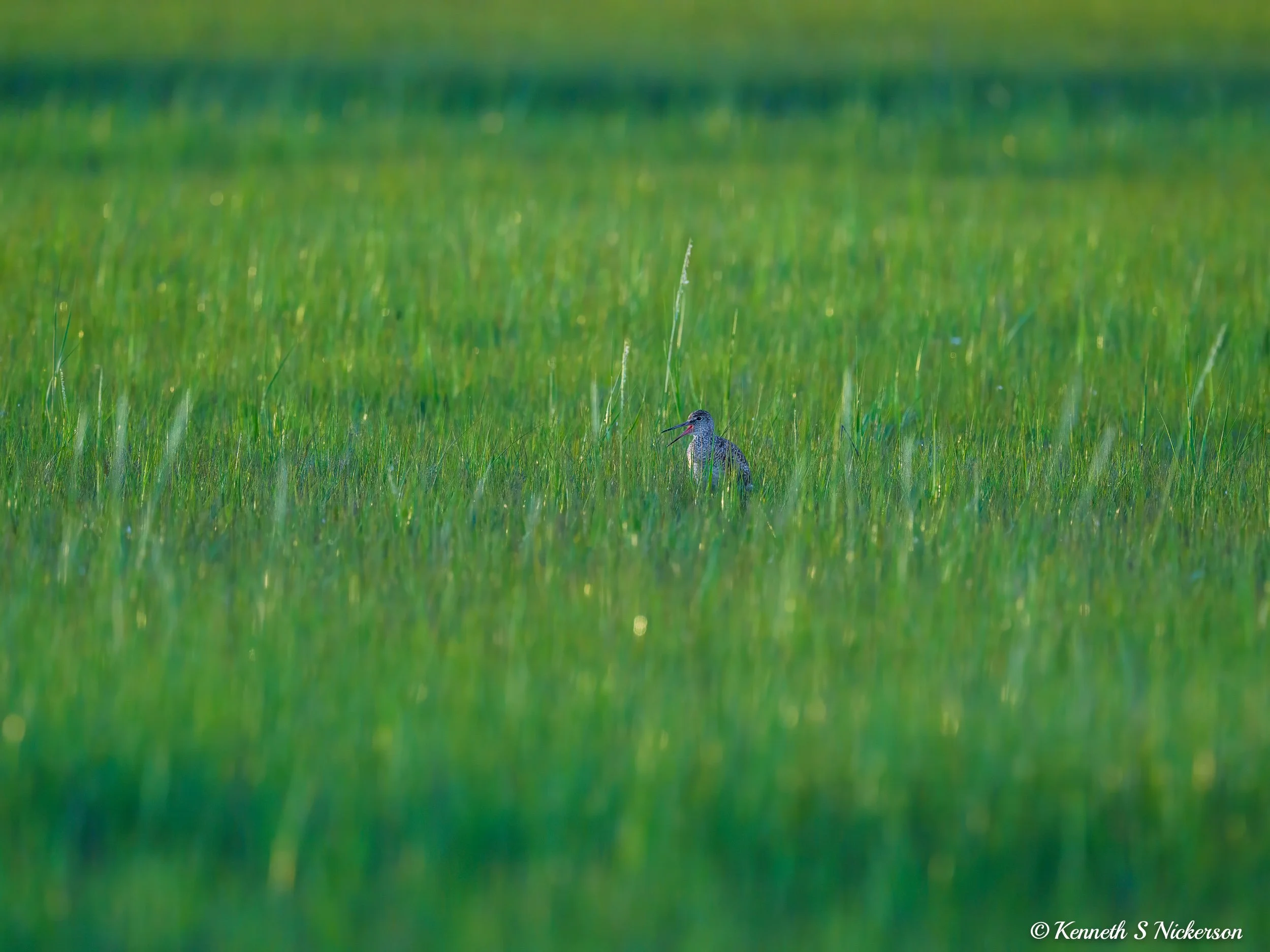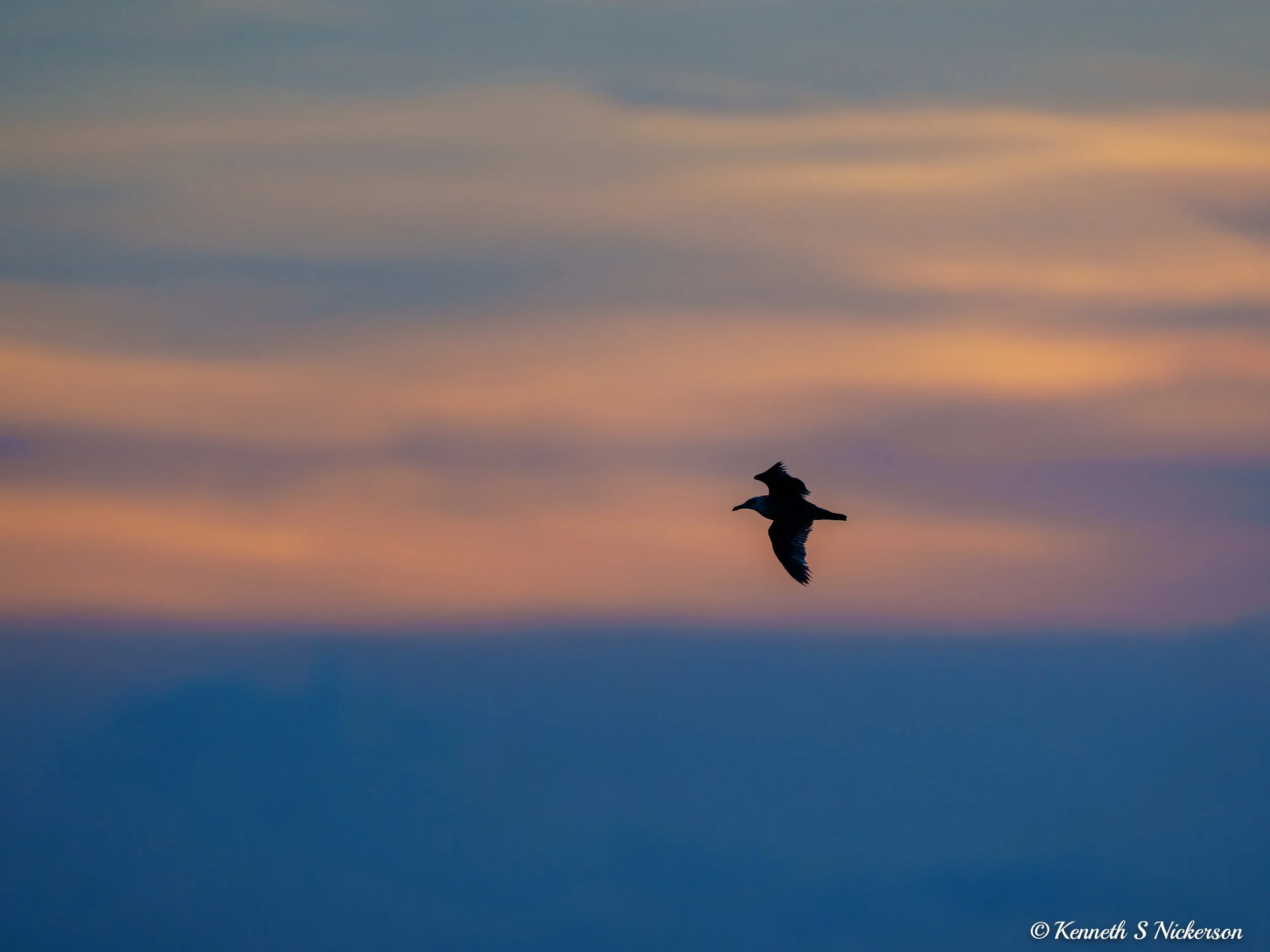Chatham Birding at Sunset
Wednesday evening after dinner, I headed out to Harding’s Beach to photograph birds in the evening light. I chose my longest lens, 600mm focal length plus a 1.4x teleconverter, to give myself the opportunity to have more intimate images of the birds I would see. Getting physically close to birds can often be very challenging, so a big telephoto lens makes more distant birds feel much closer. This Willet feeding in the surf is such an example. I like this image because the warmth of the setting sun lights up the bird and sea foam while the whites of the surf, the shadows of the waves, and the reflected blue from the sky bring a richness to the ocean backdrop.
Here, a Least Tern dives towards the water targeting a small fish. The water is Nantucket Sound, not the Atlantic Ocean, so it takes stronger winds to generate large waves. The wind posed a real challenge for me at times. My 600mm lens is two feet long and seven inches across at its end. At that size, it functions a bit like a sail, with the strong changeable wind catching the lens and pushing it around. With such a long lens, even small movements caused by the wind can sometimes push the subject completely out of the frame. Standing shots, such as photographing birds in flight, became much more challenging compared to shots when I was lying on the sand like the Willet photo above.
This photo of a Black Scoter posed its own challenges as the bird bobbed up and down in the waves. I had to use manual focus because the autofocus would lose the bird when it disappeared behind a wave, then struggle to pick out the bird amidst all of the moving waves. A additional challenge was that most of the time, the Black Scoter would either be looking away or have the visible portion of its head in the shadows.
Not much later, I captured this image of a White-Winged Scoter in the surf. With its body behind the wave, the white stripe on its wing, which gives the species its name, is hidden. This image is an example of why I value my big lens. I was lying on the sand just above the waves, so I could not get closer. The bird’s head is only a couple of inches in size, so magnification is necessary to bring it close. The human eye has a field of view similar to a 40mm lens. With my teleconverter, I was photographing at 840mm or about a 20x magnification. With my high resolution camera, I cropped the image to get the equivalent of about 40x magnification.
As I rounded the lighthouse and began walking along the inlet towards Stage Harbor, I entered more protected waters. In the shallows, I came across a collection of immature Common Eiders including this male and an out of focus female in the foreground.
On shore, a Laughing Gull tried to decide if it needed to be concerned with me. When I am lying on the ground, most species of birds generally ignore me if I remain still. However, if I am pivoting my lens around, such as from looking out at the water to looking down the shore, I need to do so slowly or birds may start wandering away from me or even fly off.
A bit further down the beach, a Bonaparte’s Gull’s feathers were puffed up in the wind.
Finally, near where the beach turns to marshland, I came across this Common Loon on the shore. Previously, I have only photographed loons in the water. Loons cannot really walk. They use their rear legs to push themselves forward on their bellies in a slow and awkward manner. Consequently, they are rarely on land. I took care to approach slowly and tangentially so that I got moderately close without scaring the loon.
This was the first Piping Plover I have seen this year. Piping Plovers are an endangered species with a global population of about 8500. The beaches around Chatham and Monomoy are nesting grounds for them, so portions of the beach are roped off early in the summer to protect their nests which are in the sand above the high tide line. This Piping Plover was looking for food among the seaweed pushed up by the high tide.
This Short-Billed Dowitcher was searching for its food in sand still moist from the slowly retreating tide.
In contrast, this Least Sandpiper decided that it had place to go and things to see. This image makes me think of the old videos of early airplane flight attempts, where the plane is bouncing up and down trying to get airborne. In reality, the Least Sandpiper took off smoothly towards me, and I never considered such a thought until I looked at this image.
Some clouds started accumulating on the western horizon hiding the setting sun. With that, the light faded extremely quickly. I started walking back, taking the inland route through the vegetation. Here a Savanah Sparrow sat on some brush with its telltale yellow marking near its eye clearly visible.
Off in the distance among the marsh grass, this Willet was screeching. The first photo of this post was also of a Willet as is my next image. Collectively, these three images showcase three Willets using completely different backgrounds, from the blue waves of the ocean, to the green marsh grasses, to the yellow of the setting sky. I have included all three to show how central the background is to bird photography.
As the sun set behind the clouds, it became harder and harder to get sufficient light for photographs of birds on the ground. Here I took advantage of partial backlighting and the translucent aspects of the WIllet’s wings for this image. A few moments later, the Willet had the setting sun directly behind it, creating a pure silhouette because of the significantly increased brightness of the sky, thereby losing the detail visible in this image.
As more and more light was blocked by the clouds, I only focused on silhouettes, emphasizing the color aspects in the clouds which were present but not pronounced. The blue below this Herring Gull is not the ocean, but rather a dark band of clouds just on the horizon.
